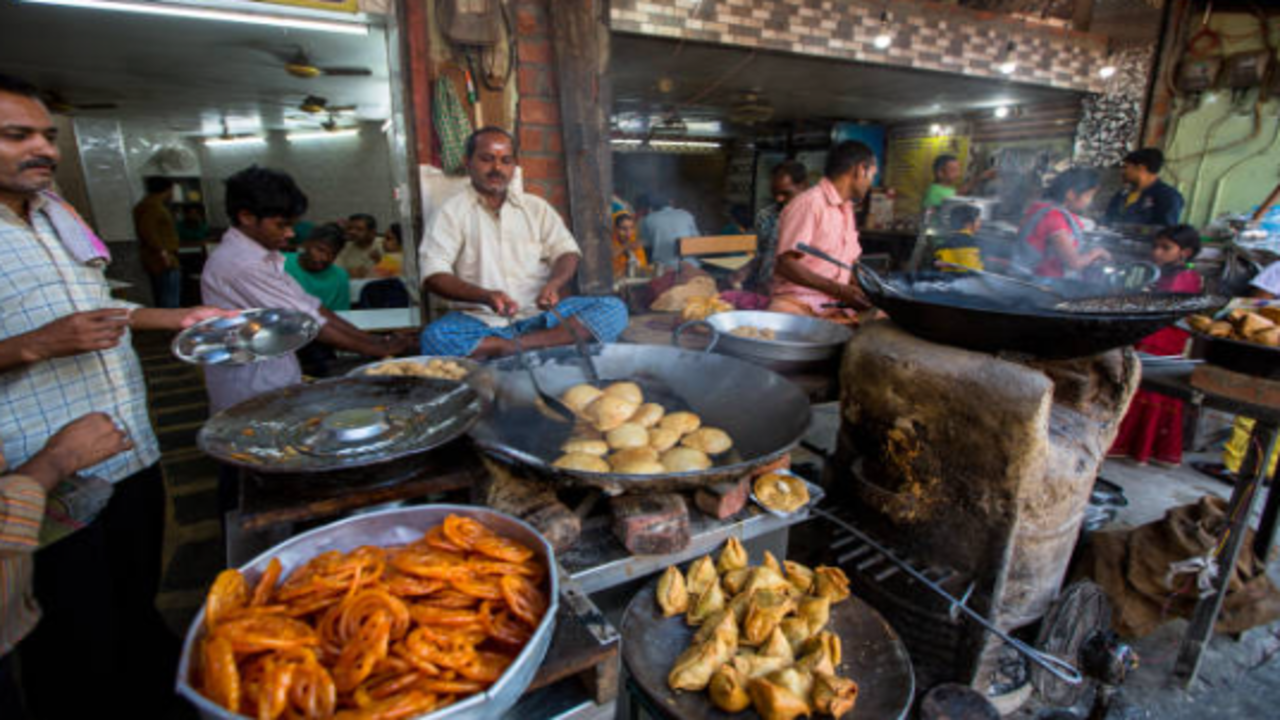



Traffic patterns and urban movement play a central role in shaping Kolkata’s vibrant street food culture. Here’s how traffic influences where, how, and what people eat on the city’s streets:
1. Location and Accessibility
- Strategic Placement: Street food vendors often set up near high-traffic areas—busy intersections, office hubs (like Dalhousie, Ultadanga, Park Circus), and transit points—to maximize visibility and customer flow. These locations are chosen because they attract office-goers, students, and daily commuters who rely on quick, affordable meals during short breaks or while in transit345.
- Historic Roots: Iconic spots like Dacre’s Lane have thrived for decades by serving generations of office workers and commuters, with food stalls adapting their hours and offerings to match the city’s traffic rhythms and workday schedules.
2. Timing and Customer Flow
- Peak Hours: Vendors see the highest sales during rush hours—morning and evening—when foot and vehicular traffic peaks. In areas like the Writer’s Building, up to 75% of office workers depend on street food for daily meals, reflecting how traffic patterns dictate demand3.
- Flexible Operations: Many vendors adjust their timings, setting up or closing stalls based on traffic restrictions, road closures, or special events that affect pedestrian movement35.
3. Regulation and Urban Management
- Vending Zones and Traffic Coordination: City planners and Kolkata Police coordinate the placement of kiosks, designate hawking zones, and regulate timings to balance street vending with smooth traffic flow. Vendors are often required to keep a set distance from crossings or bus stops and are not allowed on carriageways, bridges, or flyovers to avoid obstructing traffic3.
- Impact of Road Closures: During rallies, festivals, or monsoon flooding, reduced foot traffic can force vendors to shut temporarily or relocate, directly impacting their livelihood13.
4. Challenges and Adaptation
- Infrastructure Gaps: Lack of basic amenities—clean water, waste disposal, electricity—at high-traffic vending spots can hinder hygiene and safety, even when vendors are trained in best practices. This is a challenge for both vendors and city authorities trying to maintain public health standards in busy areas.
- Regulatory Pressure: Vendors face uncertainty due to frequent harassment or forced relocation by authorities seeking to ease congestion or enforce traffic rules. Despite these challenges, Kolkata’s street food vendors have shown resilience and adaptability, often reorganizing their stalls or adopting new practices to survive.
5. Cultural Impact
- Diversity and Innovation: The constant movement of people from different backgrounds through Kolkata’s streets has fostered a diverse and innovative street food scene, with global and local flavors coexisting and evolving in response to changing commuter tastes.
- Community and Tradition: Iconic food lanes and stalls have become part of Kolkata’s urban identity, with recipes and serving styles passed down through generations, closely linked to the city’s daily traffic pulse.
In summary:
Kolkata’s traffic doesn’t just move people—it shapes where street food thrives, what’s on offer, and how vendors adapt to the city’s ever-changing rhythms. The result is a street food culture deeply intertwined with the flow of Kolkata’s streets, reflecting both the challenges and the dynamism of urban life.




Leave a Reply